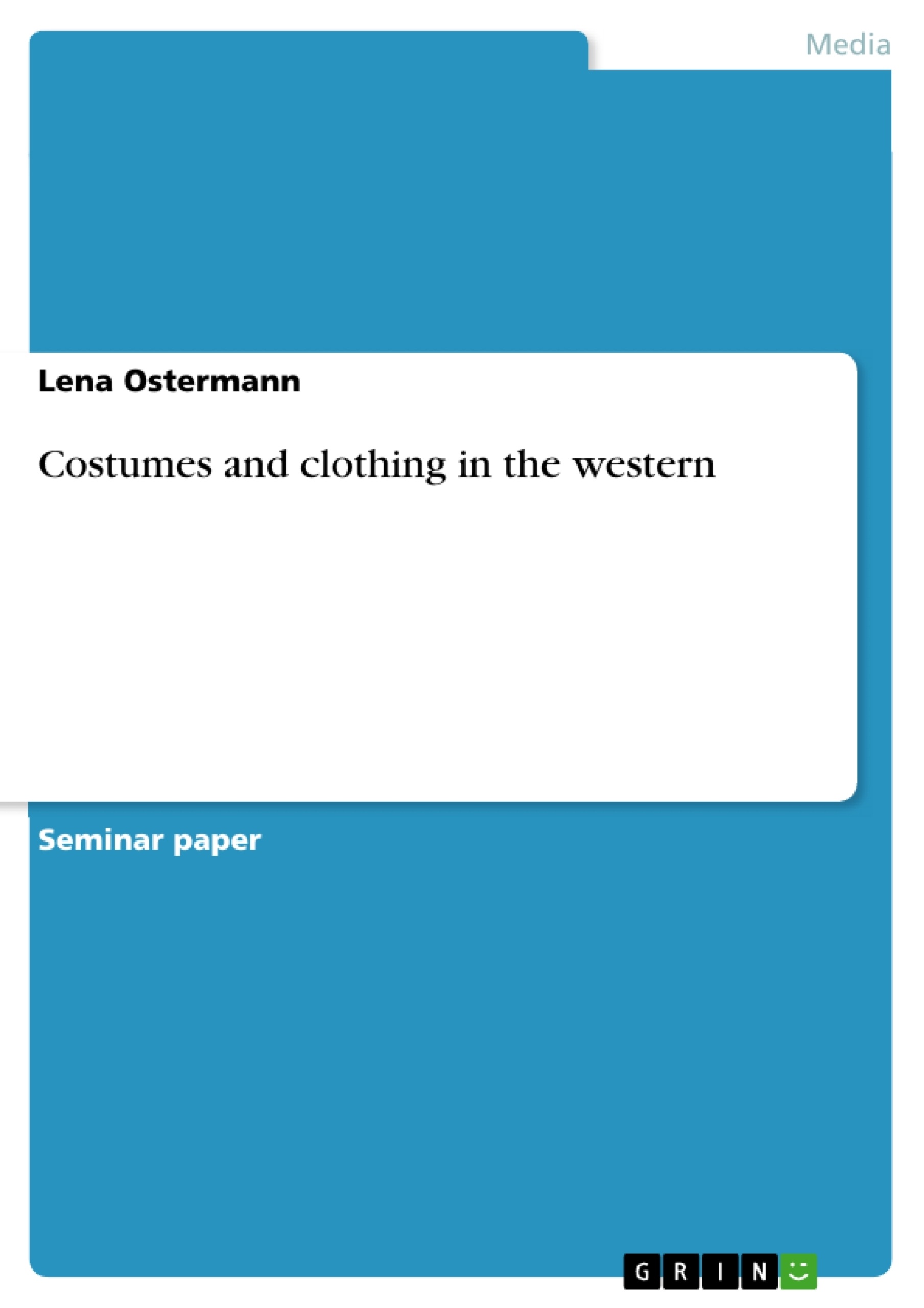Where can we find symbolic meaning in costumes? To which extend is clothing part of the character, and where does costume get the status of an object? How does costume create paradoxes in a character and where does it underline special features of a figure? What happens when we find cross-gender clothing in the Western – women in men's clothes or men in women's dresses? How do we distinguish between heroes and villains just from their looks?
To answer these questions, I will, after an introduction in both the Western as a genre and the use of costumes in film, analyze the use of costume in four examples.
Table of Contents
- Introduction
- The Western as a genre
- Costume and clothing in cinema
- Western role-models and their costume
- The classic: John Ford's “My Darling Clementine” (1946)
- The death of the hero: John Ford's “The Man who shot Liberty Valance” (1962)
- Post-western: Jim Jarmusch's independent “Dead Man” (1995)
- Female heroes?: “Bad Girls” (1994)
- Conclusion
- Bibliography
- Filmography
Objectives and Key Themes
This paper analyzes the use of costumes and clothing in Western films, exploring their symbolic meaning and narrative function. It examines how costume contributes to character development, creates paradoxes, and distinguishes between heroes and villains. The study also investigates the representation of gender in Western films through clothing choices. The analysis focuses on specific examples to illustrate these themes.
- The symbolic meaning of costumes in Westerns
- The relationship between costume, character, and narrative
- The representation of gender in Western films through costuming
- The evolution of costuming in Westerns across different eras
- Costume as a tool for distinguishing heroes and villains
Chapter Summaries
Introduction: This introduction establishes the Western as a long-standing and popular genre, despite periods of decline. It highlights the underrepresentation of women in both Westerns and the academic study of their costuming. The author outlines the paper's objective: to explore the symbolic meaning of costumes in Westerns, their role in character development, and their contribution to the narrative. Key questions are raised regarding the use of symbolism in costumes, the paradox of costume in character portrayal, and the representation of gender through clothing choices.
The Western as a genre: This chapter provides a brief overview of the Western genre, tracing its history from its origins in 1903 to its evolution through various stages. The chapter discusses the typical characters, settings, and plots associated with Westerns, differentiating between "classical" Westerns, "adult" Westerns, and "Spaghetti" Westerns. The diverse ways of categorizing Westerns are highlighted, with discussions of classifications based on plot, setting, and the changing relationships between heroes, villains, and society. The chapter sets the stage for the analysis of costuming within the various subgenres of the Western.
Keywords
Western films, costume, clothing, gender representation, character development, symbolism, John Ford, Jim Jarmusch, genre analysis, film history, American West.
FAQ: Costume and Clothing in Western Films
What is the main topic of this paper?
This paper analyzes the use of costumes and clothing in Western films, exploring their symbolic meaning and narrative function. It examines how costume contributes to character development, creates paradoxes, and distinguishes between heroes and villains. The study also investigates the representation of gender in Western films through clothing choices.
What are the key themes explored in the paper?
The key themes include the symbolic meaning of costumes in Westerns, the relationship between costume, character, and narrative, the representation of gender through costuming, the evolution of costuming in Westerns across different eras, and costume as a tool for distinguishing heroes and villains.
Which films are analyzed in detail?
The paper focuses on specific examples, including John Ford's "My Darling Clementine" (1946), John Ford's "The Man who shot Liberty Valance" (1962), Jim Jarmusch's "Dead Man" (1995), and "Bad Girls" (1994).
What is the structure of the paper?
The paper is structured with an introduction, a chapter on the Western genre, a chapter focusing on costume and clothing in cinema, a chapter dedicated to Western role models and their costumes (including the four films mentioned above), a conclusion, a bibliography, and a filmography.
What is the introduction about?
The introduction establishes the Western as a long-standing and popular genre, highlighting the underrepresentation of women. It outlines the paper's objective: to explore the symbolic meaning of costumes in Westerns and their role in character development and narrative.
What does the chapter on "The Western as a genre" cover?
This chapter provides a brief overview of the Western genre, tracing its history and discussing typical characters, settings, and plots. It differentiates between various types of Westerns and highlights diverse ways of categorizing them.
What are the keywords associated with this paper?
The keywords are: Western films, costume, clothing, gender representation, character development, symbolism, John Ford, Jim Jarmusch, genre analysis, film history, American West.
What is the overall objective of this academic work?
The overall objective is to provide a comprehensive analysis of the use of costumes and clothing in Western films, examining their symbolic meaning, narrative function, and contribution to character development and gender representation.
What is the target audience for this paper?
The target audience is likely academics and students interested in film studies, specifically focusing on the Western genre, costume design, and film history.
Where can I find more detailed information about the content of each chapter?
The provided text includes chapter summaries that offer insights into the content of each chapter. For a more in-depth analysis, please refer to the complete academic paper.
- Quote paper
- Lena Ostermann (Author), 2006, Costumes and clothing in the western, Munich, GRIN Verlag, https://www.grin.com/document/87532



